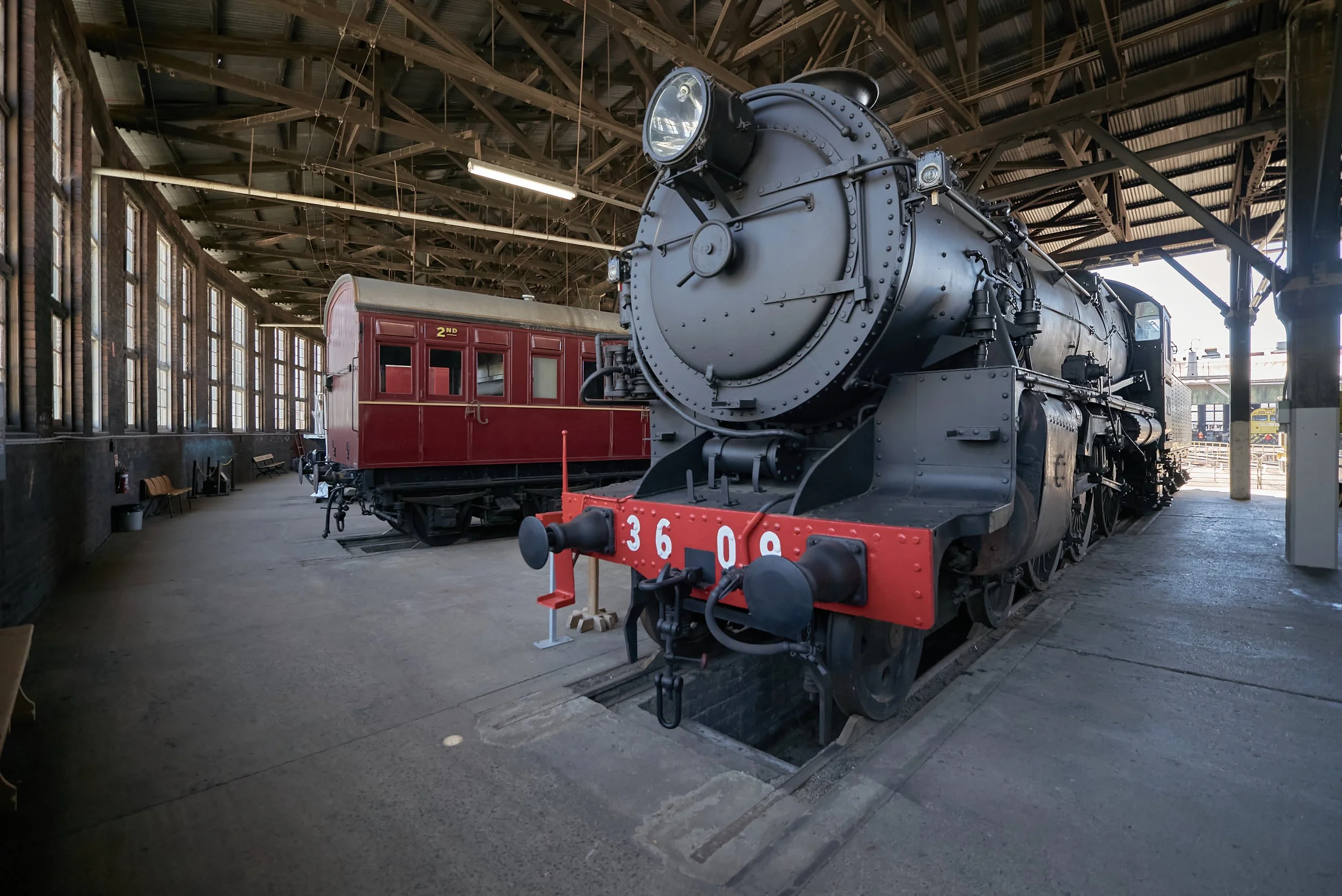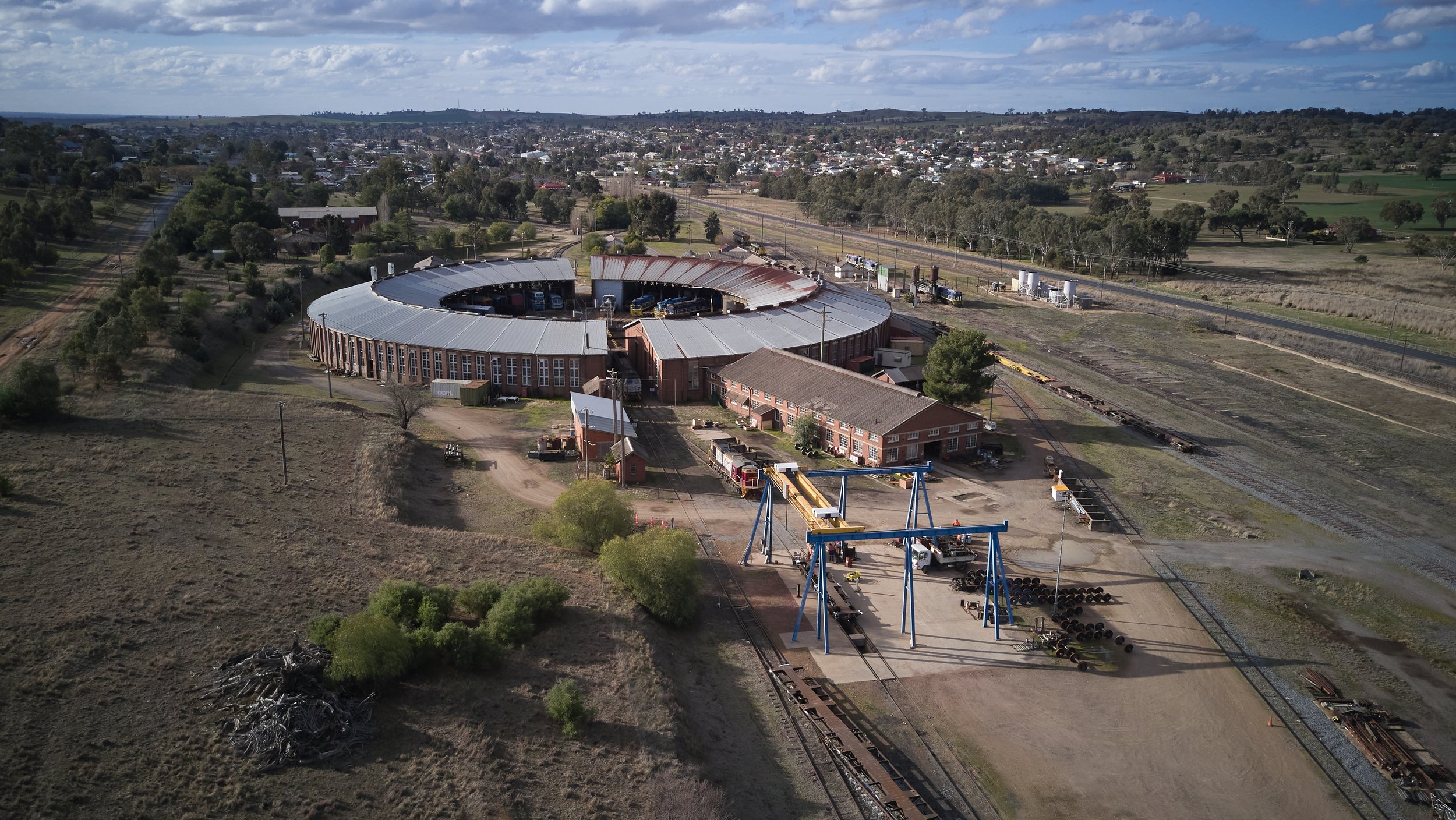About The Junee Roundhouse Museum
part of our national railway heritage
a museum run by a dedicated group of volunteers who conserve, restore and maintain historical exhibits ranging from locomotives and rolling stock to photos, documents and a model railway, and open a unique building to the public
History of the Regional Heritage Transport Association - Junee Inc, the manager of the Roundhouse Museum.
Following the closure of the Junee Roundhouse in 1993, a small group of Junee residents interested in tourism looked at the possibility of starting a museum at the Roundhouse. I spoke with the then NSW Minister for Transport, Mr Bruce Baird, and our then Local Member, Mr Joe Schipp, who were both instrumental in helping us obtain rolling stock, and the Roundhouse building. Mr Ian Gray, Junee 2003 Officer, and myself went to Sydney a number of times to meet with State Ministers and to look at rolling stock that was listed for auction. This was all done under the umbrella of the Junee 2003 Committee and soon became too large for that organisation.
A local public meeting was called in December 1993 to gauge the town's feeling of opening the Roundhouse as a museum and Mr Stuart Sharp from Rail Heritage, Sydney, was invited to address the gathering.
Over 120 people attended that meeting and the name, Regional Heritage Transport Association - Junee Incorporated, and committee was formed, with myself as the Chairman.
The museum opened to the public in April 1994 and a private rail operator, Austrac, was formed and came to the Roundhouse in November 1994.
Gail Commens, Founder & Chairman 1993-1998
The History of the Roundhouse is told in our video: The Story of Junee Roundhouse
The Roundhouse
Construction of the Junee Roundhouse commenced in 1943 and was officially opened on Friday 29 September 1947, although it had already been in service since January 1947. When built, the 100 foot turntable was the largest in the Southern Hemisphere, and now exceeded only by the 105 foot turntables at Broadmeadow, Thirlmere and Werris Creek.
The Roundhouse is of brick construction and has 42 repair bays, a machine shop, and until the demise of steam in the early 1960's, had a large elevated coal stage and a de-ashing pit.
With the arrival of diesel power came dramatic changes to the workforce, especially in the trade areas. Boilermakers, blacksmiths and steamfitters were replaced by diesel fitters and electricians.
The Roundhouse was built to replace the original locomotive depot situated adjacent the southwest line at the northern end of the Station. (Now opposite the Baptist Church in Main Street, Junee).
During the 60 years after the original depot was constructed, additional sheds and structures were built, but were unsuitable for maintenance of future larger and more powerful locomotives.
In addition, the removal of the depot from the centre of town had the added benefit of eliminating the smoke and noise from the township.
For many years travellers from Gundagai, Temora, Wagga Wagga and Griffith knew they were approaching Junee by the smokey haze visible across the horizon.
During the 48 years of Government railway operation, virtually every class of steam and diesel locomotive, self propelled rail cars, modern XPT power cars and some interstate locomotives received attention at the Junee Roundhouse.
Junee Railway Workshop succeeded Austrac, continuing the operation of the Roundhouse as an ongoing business.
Regional Heritage Transport Association - Junee Policies
You are welcome to read our


